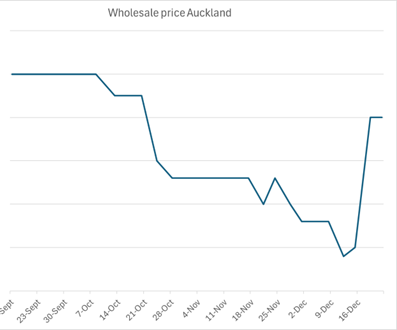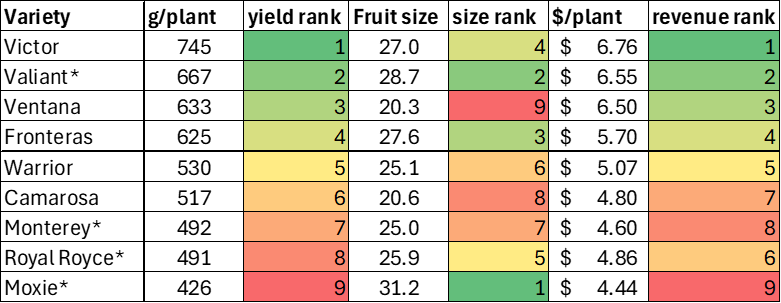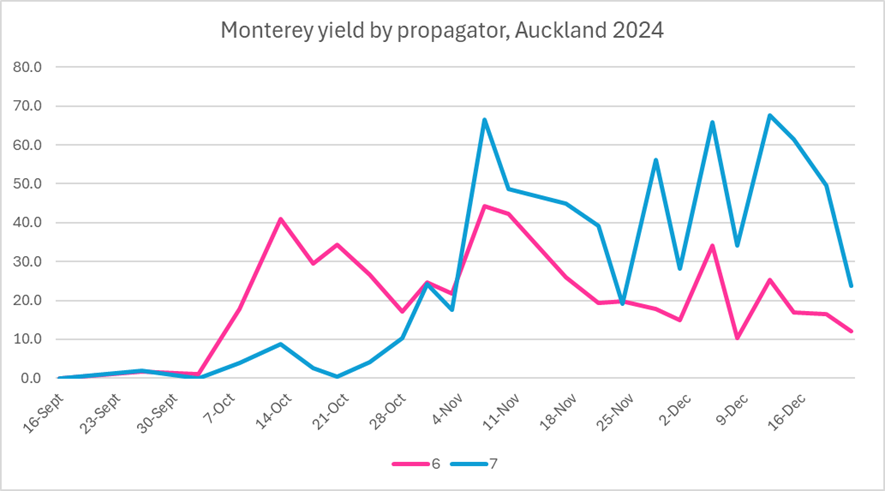© 2025 Berryworld, All Rights Reserved
The law of supply and demand dictates that when there’s strong supply, the price is lower. This situation is sad for strawberry growers, as it effectively means that their best quality fruit get the lowest returns. This reality means that profitability has a lot to do with WHEN the fruit is picked.
There are two common strategies to take advantage of better prices; be early to market, or have supply in the late summer/autumn. A grower’s climate dictates which strategy will be the most successful. For growers in Auckland or north, early is their niche.
We have good price data for Auckland’s spring season.

Both pricing and yield underpins which variety generates the most sales revenue for Auckland growers.
When aiming for early production, the variety chosen is key. Ventana is still unsurpassed for early production.

Note that the Auckland trial runs only through until Christmas, so the day neutral varieties whose seasons are longer usually do not shine.
There are a couple highlights from this chart:
Given that earliness is so important to profitability in Auckland and Northland, what strategies can growers use to enhance earliness?
We tried to illustrate the impact of planting earlier in 2024 by planting small (70ml) plugs in March, April, and May in the Auckland trial. Our illustration failed for two reasons:
This experience highlights how achieving an early fruit goal has to be supported by other aspects—a frost free site and adequate nutrition.
We can see that earliness was enhanced with large multicrown plugs. Although Monterey wouldn’t be the variety choice for earliness, we did have Monterey from multiple propagators, which gave us an interesting view on yield patterns.
The graph below shows yield per pick for two different types of plugs. Pink shows the early yield of a large multi-crown plug, while the blue shows the higher later yield of a plug which started out smaller and more vegetative.
Both yield patterns can be useful for growers with different marketing strategies. The general principle in play here is that a high peak in yield is often followed by a lull, because while the plant was ripening a big fruit load it was unable to make as many flower buds for the future. Conversely, a slower start to fruiting often yields more strongly later on. In this case it wasn’t the size of the plug that caused it to start yielding later; it probably related more to the higher N fertilization during propagation, which tips the plant towards more leaf growth and fewer flower initials. What yield pattern is best for an individual grower will be determined by their marketing strategy.

The next article in our series will discuss strategy #2 for strawberry grower profitability: varieties for long-season and autumn, the day neutrals.